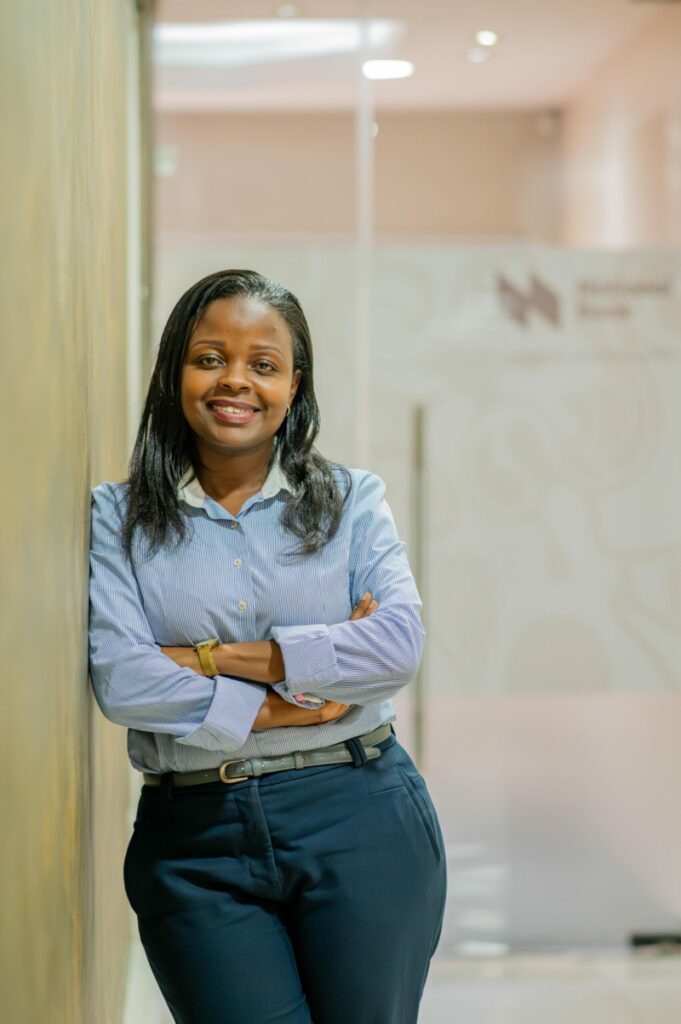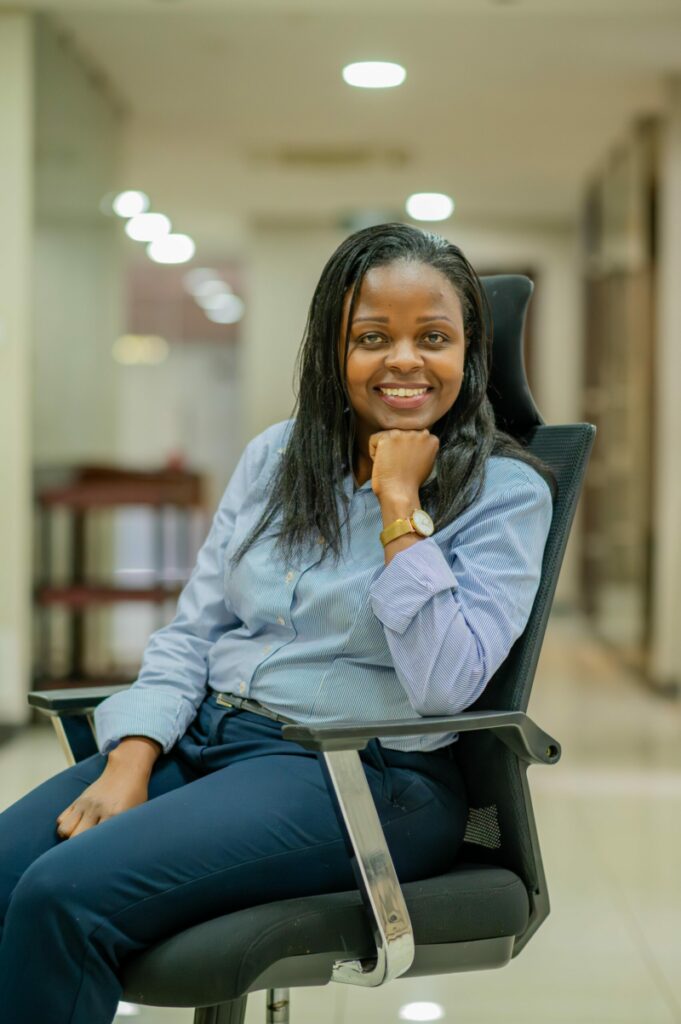On 24 October 2022, dx⁵ launched dxNova, a diversity, equity, and inclusion (DEI) initiative.
Born out of a need for DE&I in the tech space and sustainable digital transformation, dxNova is a three-pronged approach to inclusion. Uniting women, youth (particularly Gen Z), and Persons with Disabilities (PwD) in digital transformation, dxNova strives to stretch beyond the dx⁵ walls, reach out to those who have historically been excluded and raise awareness in the tech industry.
Part of the dxNova lifeblood has been this dedicated monthly segment that has featured women in the tech space and feature articles around the three pillars. Annually, CIO Africa magazine has celebrated and identified 45 Most Influential Women In Digital Transformation.
ADVERTISEMENT
2023, however, witnessed our first-ever dxNova Woman of The Year at our biggest event of the year, the CIO100 Symposium & Awards. Georgina Mukami Odhiambo, Head of ICT Channels Operations, at the National Bank of Kenya, was our inaugural winner. Describing herself as a “Service Delivery Ambassador,” she has over 12 years of experience managing multi-faceted projects cutting across functions within banking operations.
Mukami took home the prestigious dxNova Woman of the Year award for her outstanding contributions, visionary leadership, and unwavering commitment to innovation in the realm of technology. The award testifies to her remarkable leadership, resilience, and groundbreaking achievements, acknowledging her role as an influential figure who inspires countless individuals, particularly women, to pursue careers in technology. In her own words, “I’m not taking this win lightly. I hope those who read this will be inspired, and that anyone can get here. Anyone can do this.”
First off, congratulations on your win. It was a very hotly contested and tight race. The CIO community that votes for the CIO of the Year came together to vote for the dxNova Woman of the Year, and you won.
ADVERTISEMENT
Thank you. My Gala Dinner table encouraged me, telling me that I would win the award, but I kept telling them it was quite an extensive list of candidates. When you called out my name I was stunned!
Walk me through your career. Did you want to do this growing up?
Initially, I wanted to be a doctor. But I was also curious about how things work, and I got to reflecting and it morphed from medicine to engineering, and I knew I wanted to do something with tech. I started my career at the very bottom. In my time, when you were fresh out of campus, you were put into preventative maintenance, and I found it quite interesting. Over time, I settled on IT operations thinking about how I could get things to work better. I always got my hands dirty, and a former boss noted I always put my hand up for assignments. I’d come in very early, and get the work done.
ADVERTISEMENT
The general profile of people in tech back then was that they were rather stiff, wearing lab coats. My perspective was different. Every other time we would get customer service challenges, I would handle the people, which brought in the human aspect to tech. With National Bank, it has been 10 years of learning. I remember once writing my appointment letter, and handing it to the boss, who then told me that wasn’t how it worked I told him I was confident in my abilities to fill in that vacancy. I had done my time, preparing for it. When I got in, I realised it was not what I expected. Leadership looks glamorous until people don’t listen or do what you ask them to do.
How did you handle the challenge of not being heard?
I sat with the team because I could see nothing was moving. I got in with the energy of 1,000 people. And they said my ideas were coming in too fast, and they couldn’t catch up with implementation. This demotivated team pushed me beyond my limits. I thought I could jumpstart in days but there were no hacks. I had to put in the time and the framework. This was the frontline team. We get called when things have gone awry. Otherwise, no one remembers us. One of the changes was setting up a service desk that corresponded with training.

You are uniquely qualified for leadership as someone with both technical and people skills. How did you develop both?
Practice, learning on the job and taking feedback. Every morning, I would come in, and say hello to everyone. Then I was put in a position where I had to develop relationships with people, providing them with lots of opportunities to engage. It has been up and down and gone sideways.
You’ve stayed at the National Bank of Kenya for a decade now. What is it about it that makes you stay?
It is a great place to work. The brand is strong, and there are plenty of opportunities to share ideas. The red tape is minimal. We have access to our leaders and can reach out for support. In the tech space, nothing stands still either. And they want to grow their talent in-house. It is not always about attracting external talent.

How big a role would you say your innate curiosity has helped propel you forward?
From the moment I wrote my first appointment letter to date, strategies have come from senior leadership. The ‘why’ may not be mine to weigh, but the ‘how,’ that I can do. I am always looking out for conferences and forums to keep abreast of changes in my space.
You must have experienced challenges around innovation and hit a wall. How have you managed this?
Granted, there can be a lot of focus on rolling out apps. But what about focusing on ideas elsewhere? Innovation does not have to be new. Things we do daily can be innovative. Sometimes, you can have a brilliant idea whose time has not come. We have to operate as a bank to serve customers and cannot do our own thing. But we can pitch ideas that ripen in three years.
Does that not make you impatient? Who wants to wait that long to bring their idea to life?
The thing to do is stay curious and understand, that not every idea has to be implemented. We must accept that. When the time is right for your idea, it will be easy. Think Blue Ocean. What is three years in technology? We blink, and it is gone.
How did you end up with your winning project in your winning role?
There were several projects. My current role has been a little over a year. The game changer here is middleware, allowing channels to transact for 24 hours straight. Middleware is software that acts as a bridge or intermediary between different applications, systems, or software components, facilitating communication and data management between them. It essentially serves as a layer of software that enables disparate, often incompatible, applications or components to work together seamlessly. It has been quite significant in growing our numbers. This has also been supported throughout our ecosystem.
With banking, a whole lot of digital transformation is driven by customer satisfaction. How intensely did National Bank dive into the world of the customer?
We are customer-obsessed, and it begins with our values.
Are you on call 24/7/365? How does it affect your life?
Yes, we are. But. We have put in mechanisms to ensure the system runs itself without needing us. We have alerts that cue us in on the state of the system. The 24/7 protocol is rarely ever invoked, but it is available. There is no such thing as work-life balance either. There is work, and there is life, and you do both at the same time. I have had great support from my family. Of course, there have been moments when they have thought, ‘Really? Again? What is it with this job?’ And when we expect challenges will be forthcoming, we start by preparing with stakeholder engagement and work up to that.
There is this incredible challenge for IT leaders. You need to think short-term, middle-term and long-term. How do you become a visionary, project what’s coming while still being in the moment and time-travelling, merging all this into operations?
If you take care of the nitty gritty, the big things are easy to do. We collaborate, work a lot on accountability and put all this in a matrix. Then there is the BaU – the day-to-day running of the organisation. You delegate and empower the team to run with it, and the cork continues screwing. Stepping back, and creating time to deliberate, accountability partners, delegation.
What are some of the technologies you foresee yourself working with in 2024?
When we think about the customer, we want to see them onboarded, and able to perform self-service. They don’t have much time. If I must keep calling my bank, who is my partner, to do things for me, then I will be agitated. We want to give power back to the customer, and I am seeing a lot of automation and reporting processes coming in. This is to enhance efficiency and get things done quicker. I am not enamoured of buzzwords like AI and ML. The use cases are still not very compelling. I am, however, seeing a place for robotics. An example would be a mistaken transaction. I would have to go through a lot of pain to get that money back. We need to find a way to make the customer journey less painful. We are focused on giving control back to the customer.
Does DEI have a place when it comes to facilitating innovation?
Ideas should not be boxed. If you are human, it is expected that you should have an idea. Customers can just as easily come up with ideas that present solutions. It is not limited to people with technical expertise. You can get it across the board, and this is the best place for ideas. That is what diversity does.

Who are some of your mentors or people you look up to?
I read Nassim Nicholas Taleb – the author of Antifragile: Things That Gain From Disorder. My perspective on discipline is this – get up and do something with the information you have. I am inspired as well by women in the tech space. Women like Catherine Muraga (Managing Director, ADC, Microsoft) and Agnes Gathaiya (Country Director – East Africa, Google) made it all seem so doable. They made us feel comfortable in our shoes, saying we need to lead as women; not as men who are women.
You’re something I would call a ‘sandwich leader.’ You lead upwards and downwards as much as you do sideways – if at all that is a thing. How do you manoeuvre your way through this?
One size doesn’t fit all, and you have to know your people. There is no one prescribed way. If James, for example, is dealing with an agitated customer, that is not the time to remind him of our company values. He wants a solution. It is about knowing your content, learning and unlearning. Part of being a leader is also self-awareness. Knowing that in a particular space, you need to work on different things be it my presence or messaging.
Which inevitably begs the question, how did you become self-aware?
I am not there yet. Sometimes we think we are self-aware until we get feedback and have to self-reflect. I am Catholic so I know this. The Opus Dei have a list of questions you need to ask yourself at the end of the day for this. People might not stick to it 365 days a year, but if you stick with it, you will find yourself wondering about your actions. I find that they have a very deliberate framework that works. Journalling has also helped. I am largely consistent.
What’s your one last thing before we conclude this interview?
Let us not always focus on the challenges of being in technology as women. We need to speak out. I also need to add that I have had a good support system, strangely, from men, though that could stem from the coincidence of having male bosses. I also believe a lot of focus has gone into being antifragile, and not dealing with a lot of self-doubt. I am meant to be here. I should not ask if I need to be. Instead of making it a question, it needs to be a statement.
What do you hope dxNova can do for women in 2024?
Let’s work a lot on the soft skills. We know our craft. That is without a doubt. But are we confident enough? I was in a meeting the other day and when I got a chance to speak, they were speechless. Because I made sure I got heard.
